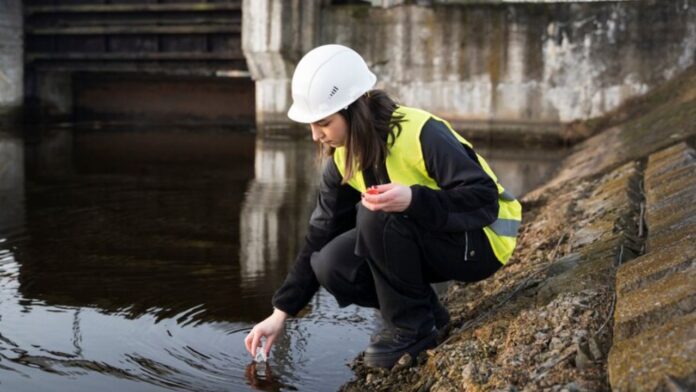Key Takeaways:
- Water damage can silently escalate, causing severe structural harm and health risks if not addressed early.
- Types of water damage: clean (low threat), grey (moderate contamination), and black (highly contaminated).
- Early detection of water damage signs is crucial; look for water stains, musty odors, and warped surfaces.
- The initial assessment by professionals sets the stage for effective restoration; thorough documentation is key.
- Water extraction must follow immediately after assessment to prevent further damage and mold growth.
- Advanced drying equipment is essential post-extraction to eliminate moisture and prevent mold proliferation.
- Regular plumbing inspections can identify vulnerabilities, helping to prevent future water damage.
- Implementing flood barriers can protect homes in flood-prone areas, enhancing property resilience.
- Seasonal maintenance checks (drainage, insulation, gutters) help prevent potential water issues.
- Choose restoration professionals with credible certifications, insurance, and a strong reputation for quality service.
- Be aware of restoration costs which can vary; clear communication with the provider is essential for budgeting.
- Research reviews and testimonials to select a reliable restoration team; consider both positive and negative feedback responses.
The Science Behind Water Damage: Understanding the Basics
Why Water Damage is a Silent Enemy in Your Home
Water damage is often dubbed a silent enemy because it can occur without immediate notice, gradually inflicting significant harm over time. This stealthiness means that homeowners may not be aware of the extent of the damage until it has become severe and costly to remediate. Water’s ability to seep into materials like wood, drywall, and insulation allows it to compromise the structural integrity of a home unobtrusively. As water infiltrates these surfaces, it can lead to mold and mildew growth, which pose health risks to residents and require extensive cleanup efforts.
Furthermore, the longer water remains in an area, the more damage it inflicts, increasing the complexity and cost of restoration efforts. Understanding the silent nature of this enemy emphasizes the importance of early detection and proactive measures for homeowners.
The Types of Water Damage: Clean, Grey, and Black
Water damage can be classified into three main categories: clean water damage, grey water damage, and black water damage. Clean water damage originates from a trusted source, such as a broken pipe or a leaking water heater. Although it poses a lesser immediate threat, it can quickly become a problem if not addressed. Grey water damage comes from sources that may have some level of contamination, such as washing machine overflow or sink drainage. This type of water carries moderate health risks and should be treated with more caution. Lastly, black water damage is the most severe, stemming from unsanitary sources like sewage backups or floodwaters. Such water contains harmful bacteria, viruses, and pollutants, requiring professional intervention and stringent safety measures during restoration. Recognizing these types will help homeowners gauge the urgency and approach required for effective restoration.
Recognizing the Signs of Water Damage Before It’s Too Late
Detecting water damage early can make all the difference in minimizing repair costs and protecting your home. Homeowners should watch for various indicators that suggest a potential water issue. These signs include unexpected increases in water bills, which may hint at hidden leaks, and the appearance of water stains on ceilings or walls, indicative of ongoing water infiltration. It’s critical to check for warped flooring or bulging walls, as these physical deformities often result from prolonged exposure to moisture.
Additionally, unpleasant odors particularly musty smells are red flags signaling the presence of mold or dampness. Using tools such as moisture meters can further aid homeowners in identifying hidden moisture levels. The key to effective water damage management lies in vigilant observation and timely action.
The Essential Water Restoration Process: Step by Step
Initial Assessment: The First Step to Effective Restoration
The initial assessment is a crucial first step in the water restoration process, setting the tone for effective intervention. When a water damage incident occurs, a thorough inspection by professionals is necessary to gauge the extent of damage and to formulate a recovery plan. This assessment involves a visual inspection of the affected area, noting water sources, and evaluating material conditions, including the flooring, walls, and furnishings.
Professionals also utilize sophisticated technology such as infrared cameras that can detect moisture behind walls or under flooring where naked eyes may miss. It is critical to document the assessment, including photographs and details of affected areas, which can play a pivotal role in insurance claims. The thoroughness of this assessment determines the speed and effectiveness of the subsequent restoration efforts, making it an essential starting point.
Water Extraction Techniques: Methods for a Quick Response
Once the initial assessment is complete, implementing water extraction techniques is paramount to prevent further damage. Water extraction can take various forms, ranging from the use of pumps for significant flooding scenarios to wet/dry vacuums for smaller issues. Professionals assess the exact needs of the scenario before choosing the best extraction method. For severe flooding, submersible pumps are often employed to remove standing water efficiently. For smaller areas, portable extractors and wet vacuums can be used to absorb excess moisture effectively. The time taken to remove water at this stage significantly impacts the overall restoration process delays in extraction can lead to extensive mold growth and structural damage. Moreover, immediate extraction minimizes the risk of secondary damage to non-affected areas within the home.
Drying Out Your Space: The Importance of Advanced Equipment
After extraction, the drying stage is crucial for effective restoration and prevention of mold growth. This process often necessitates specialized equipment, such as high-velocity air movers and dehumidifiers, designed to draw moisture from the air and surfaces efficiently. Air movers circulate air to speed up evaporation from walls, carpets, and furniture, while dehumidifiers lower humidity levels to prevent new moisture from settling. The significance of a thorough drying process cannot be overstated; failing to completely dry affected areas can lead to hidden moisture pockets, creating an ideal environment for mold spores to flourish within 24 to 48 hours. Depending on the extent of water exposure, drying may take several days to weeks. Regular monitoring and documentation of moisture content using hygrometers ensure that the drying process is successful and prompt.
Preventative Measures: Keeping Your Home Safe from Future Water Woes
How to Identify Plumbing Vulnerabilities in Your Structure
Preventing future water damage starts with understanding your home’s plumbing system. Homeowners should familiarize themselves with their plumbing layout, identifying key components like the main shutoff valve, pipes, and fixtures. Regular inspections of these areas can uncover signs of wear and tear, such as rusted pipes or signs of leaks at connections. Homeowners need to check for condensation around fixtures, which could indicate insufficient insulation or ventilation. Seasonal checks, especially post-winter when pipes may have been subjected to freezing temperatures, allow for early identification of vulnerabilities. Professional plumbing evaluations can also provide insights; having an expert inspect your system can yield advice on best practices, upgrades, and repairs that may prevent major water damage in the future. Vigilance and preventative maintenance can save homeowners considerable time, stress, and financial burden associated with extensive repairs.
Implementing Flood Barriers: A Smart Investment for Homeowners
In regions prone to flooding or heavy rainfall, implementing flood barriers can be a savvy protective measure for homes. Flood barriers aim to redirect water flow away from the property and prevent water ingress during storms. Options range from temporary barriers, like sandbags, to more permanent solutions like flood gates and retaining walls. For those who live in particularly vulnerable areas, investing in sump pumps can also protect basements from flooding. These systems pump out water automatically when levels rise, minimizing potential damage. Flood-proofing measures not only protect property but can also enhance property value, serving as a reassurance for both current and prospective homeowners. The importance of assessing your property’s position, potential flood zones, and available prevention technologies cannot be understated in the quest for water damage prevention.
Seasonal Maintenance Tips: Stay One Step Ahead of Water Damage
Seasonal maintenance affords homeowners a proactive approach to safeguarding their properties against water damage. In spring, checking drainage systems for leaves and debris is prudent, ensuring downspouts are directed away from the foundation. Summer can be an excellent time for inspecting and addressing any cracks in sidewalks or driveways that can harbor water. In fall, gutter cleaning becomes paramount, particularly before winter snow and ice, which can create blockages and water backup. Finally, winter should compel homeowners to insulate pipes susceptible to freezing, as frozen pipes can burst and cause substantial water damage when thawing begins. These consistent checks are critical components in a homeowner’s routine, dedicating time to prevent issues before they escalate, ultimately saving money and stress by avoiding water issues.
Choosing the Right Professionals: What to Look For
Certifications and Credentials: Ensuring You’re in Good Hands
Choosing the right professionals for water restoration hinges on understanding their qualifications and certifications. Reputable restoration companies often carry certifications from organizations like the Institute of Inspection, Cleaning and Restoration Certification (IICRC). This indicates they adhere to industry standards and best practices for water damage restoration. Moreover, it’s essential to verify that the professionals carry adequate insurance coverage, which protects both them and the homeowner during the restoration process. Researching a company’s reputation through testimonials, reviews, and case studies can also offer insights into their level of competency and customer service. Engaging qualified professionals ensures efficient, effective restoration while significantly minimizing risk during a stressful time.
Understanding the Cost of Water Restoration: What’s on Your Invoice?
Understanding the financial implications and the breakdown of costs associated with water restoration is crucial for homeowners. Costs can vary based on the extent of the damage, drying and dehumidification methods employed, equipment required, and labor costs. Homeowners should expect to see charges for services like water extraction, structural drying, mold remediation (if necessary), and repairs to affected materials.
Furthermore, additional costs may arise from disposal of damaged materials or restoration of belongings. Clear communication with your restoration provider about pricing and detailed invoices plays a significant role in navigating potentially overwhelming financial obligations during this time.
Engaging in discussions regarding insurance claims will also provide clarity on what aspects are covered under your homeowner’s policy. Knowledge of the costs involved allows homeowners to better prepare for the financial aspects of restoration.
Reviews and Reputation: How to Vet Your Restoration Team
Researching reviews and reputation is integral to selecting a trustworthy restoration team. Homeowners should utilize reputable online platforms, social media, and local business directories to gather insights from previous clients. Positive reviews reflecting customer satisfaction, timely service, and effective restoration efforts are good indicators of a reliable contractor.
Additionally, seeking referrals from friends, family, or neighbors who have undergone similar restoration can lead to trusted recommendations. In addition to positive feedback, enthusiasts should pay close attention to how companies handle complaints or disputes. A company’s response to negative feedback provides insight into their accountability and concern for customer satisfaction. Investing time in vetting potential restoration teams is vital to ensuring a qualified, reputable partner is on hand during a turbulent time.


















![10 Countries With the Best Healthcare in the World [Statistical Analysis] Countries With the Best Healthcare in the World](https://articleify.com/wp-content/uploads/2025/07/Countries-With-the-Best-Healthcare-in-the-World-1-150x150.jpg)










